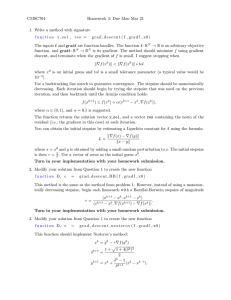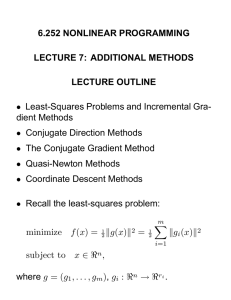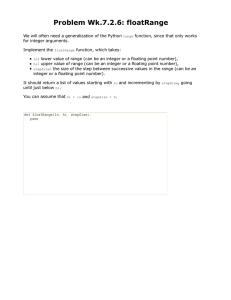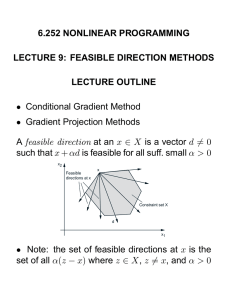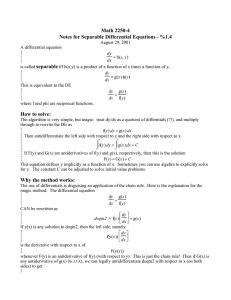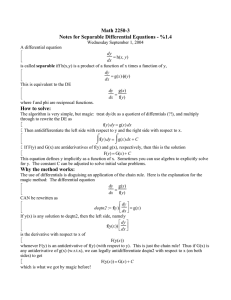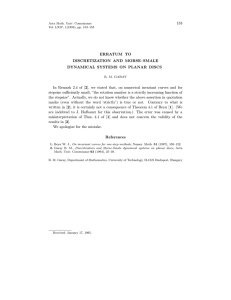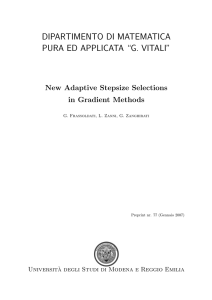Document 13501730
advertisement
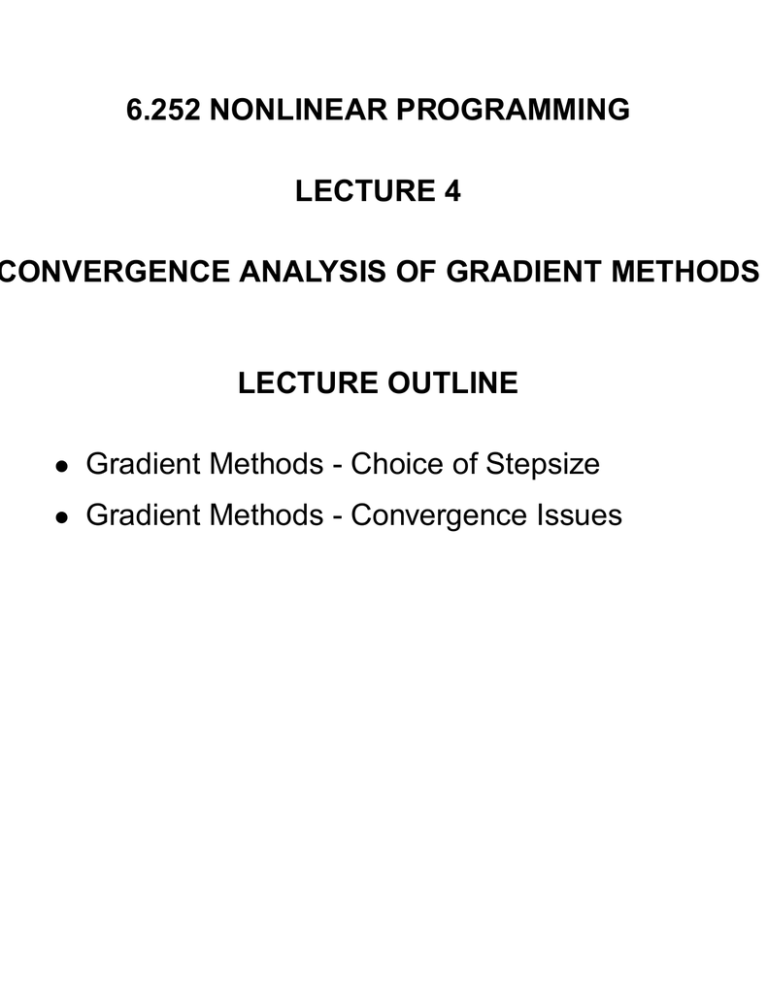
6.252 NONLINEAR PROGRAMMING
LECTURE 4
CONVERGENCE ANALYSIS OF GRADIENT METHODS
LECTURE OUTLINE
• Gradient Methods - Choice of Stepsize
• Gradient Methods - Convergence Issues
CHOICES OF STEPSIZE I
• Minimization Rule: αk is such that
f (xk + αk dk ) = min f (xk + αdk ).
α≥0
• Limited Minimization Rule: Min over α ∈ [0, s]
• Armijo rule:
Set of Acceptable
Stepsizes
0
×
Stepsize α k = β2s
Unsuccessful Stepsize
Trials
×
βs
f(xk + αd k ) - f(xk )
×
s
α
σα∇f(xk )'dk
α∇f(xk )'dk
Start with s and continue with βs, β 2 s, ..., until β m s falls
within the set of α with
f (xk ) − f (xk + αdk ) ≥ −σα∇f (xk ) dk .
CHOICES OF STEPSIZE II
• Constant stepsize: αk is such that
αk = s : a constant
• Diminishing stepsize:
αk → 0
but satisfies the infinite travel condition
∞
k=0
αk = ∞
GRADIENT METHODS WITH ERRORS
xk+1 = xk − αk (∇f (xk ) + ek )
where ek is an uncontrollable error vector
• Several special cases:
− ek small relative to the gradient; i.e., for all
k, ek < ∇f (xk )
∇f(xk )
ek
Illustration of the descent
property of the direction
g k = ∇f (xk ) + ek .
gk
− {ek } is bounded, i.e., for all k, ek ≤ δ,
where δ is some scalar.
− {ek } is proportional to the stepsize, i.e., for
all k, ek ≤ qαk , where q is some scalar.
− {ek } are independent zero mean random vectors
CONVERGENCE ISSUES
• Only convergence to stationary points can be
guaranteed
• Even convergence to a single limit may be hard
to guarantee (capture theorem)
• Danger of nonconvergence if directions dk tend
to be orthogonal to ∇f (xk )
• Gradient related condition:
For any subsequence {xk }k∈K that converges to
a nonstationary point, the corresponding subsequence {dk }k∈K is bounded and satisfies
lim sup ∇f (xk ) dk < 0.
k→∞, k∈K
• Satisfied if dk = −Dk ∇f (xk ) and the eigenvalues of Dk are bounded above and bounded away
from zero
CONVERGENCE RESULTS
CONSTANT AND DIMINISHING STEPSIZES
Let {xk } be a sequence generated by a gradient
method xk+1 = xk + αk dk , where {dk } is gradient
related. Assume that for some constant L > 0,
we have
∇f (x) − ∇f (y) ≤ Lx − y,
∀ x, y ∈ n ,
Assume that either
(1) there exists a scalar such that for all k
k ) dk |
(2
−
)|∇f
(x
0 < ≤ αk ≤
Ldk 2
or
(2)
αk
→ 0 and
∞
k=0
αk = ∞.
Then either f (xk ) → −∞ or else {f (xk )} converges to a finite value and ∇f (xk ) → 0.
MAIN PROOF IDEA
α∇f(xk )'dk + (1/2)α 2L||dk ||2
k
α=
|∇f(xk)'d |
k |2
L||d ||
×
α
0
α∇f(xk )'dk
f(xk + αd k ) - f(xk )
The idea of the convergence proof for a constant stepsize.
Given xk and the descent direction dk , the cost difference f (xk + αdk ) − f (xk ) is majorized by α∇f (xk ) dk +
1 α2 Ldk 2 (based on the Lipschitz assumption; see next
2
slide). Minimization of this function over α yields the stepsize
|∇f (xk ) dk |
α=
Ldk 2
This stepsize reduces the cost function f as well.
DESCENT LEMMA
Let α be a scalar and let g(α) = f (x + αy). Have
1
f (x + y) − f (x) = g(1) − g(0) =
0
dg
(α) dα
dα
1
y ∇f (x + αy) dα
=
0
1
≤
y ∇f (x) dα
0
1
+
y ∇f (x + αy) − ∇f (x) dα 0
1
≤
y ∇f (x) dα
0
1
y · ∇f (x + αy) − ∇f (x)dα
+
0
1
≤ y ∇f (x) + y
Lαy dα
0
=
y ∇f (x)
L
+ y2 .
2
CONVERGENCE RESULT – ARMIJO RULE
Let {xk } be generated by xk+1 = xk +αk dk , where
{dk } is gradient related and αk is chosen by the
Armijo rule. Then every limit point of {xk } is stationary.
Proof Outline: Assume x is a nonstationary limit
point. Then f (xk ) → f (x), so αk ∇f (xk ) dk → 0.
• If {xk }K → x, lim supk→∞, k∈K ∇f (xk ) dk < 0,
by gradient relatedness, so that {αk }K → 0.
• By the Armijo rule, for large k ∈ K
f (xk )−f
Defining
xk +(αk /β)dk
pk
=
dk
dk < −σ(αk /β)∇f (xk ) dk .
k
and α =
αk dk ,
β
we have
f (xk ) − f (xk + αk pk )
k ) pk .
<
−σ∇f
(x
αk
Use the Mean Value Theorem and let k → ∞.
We get −∇f (x) p ≤ −σ∇f (x) p, where p is a limit
point of pk – a contradiction since ∇f (x) p < 0.
